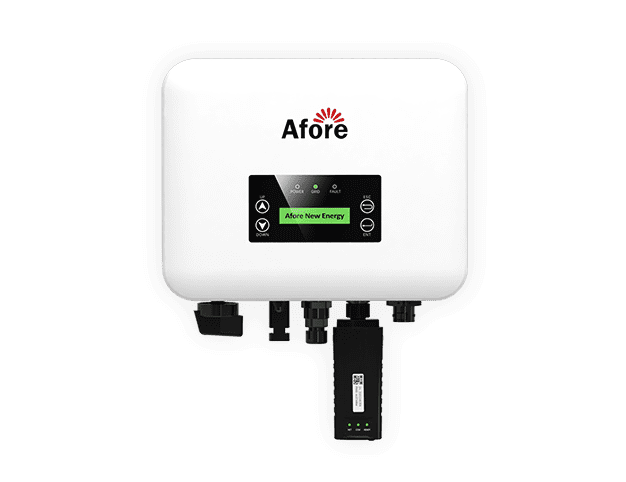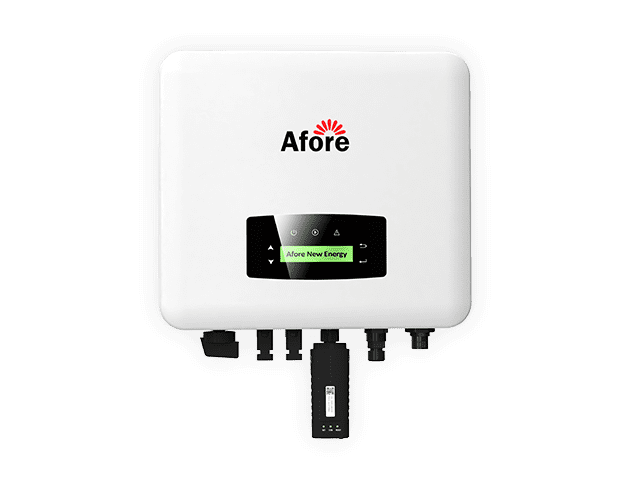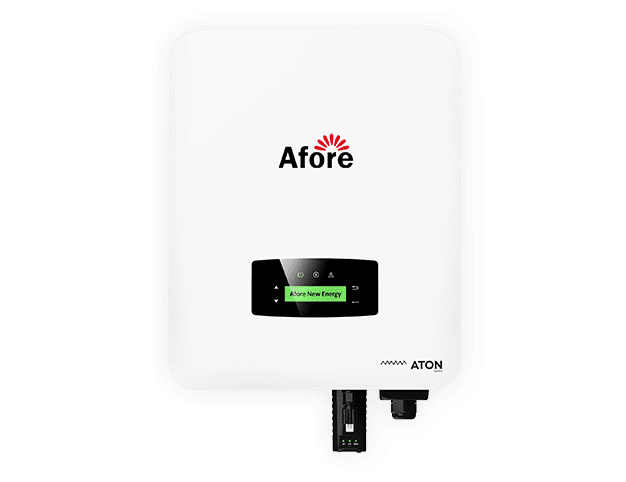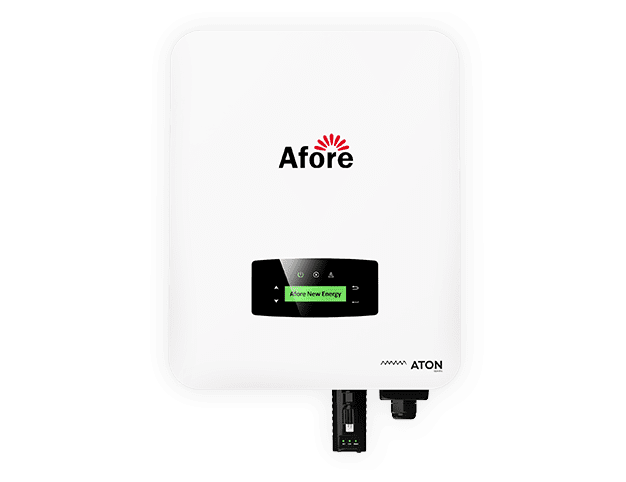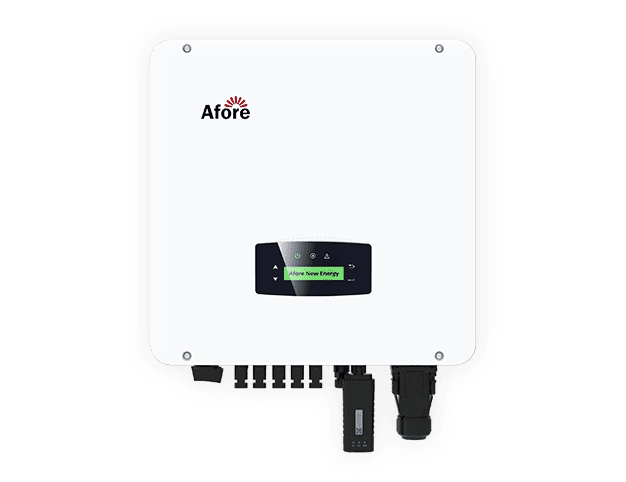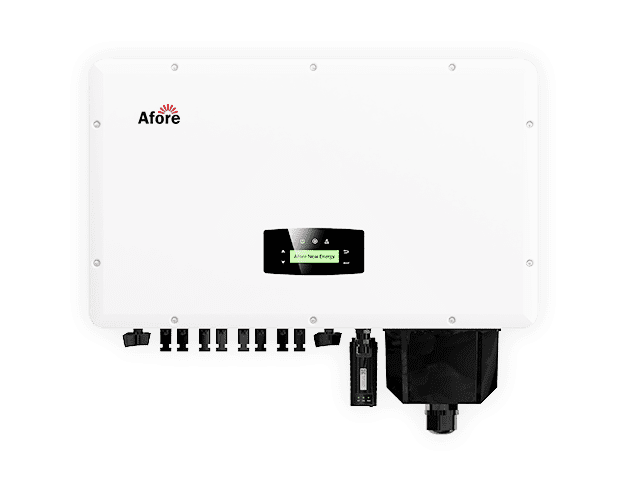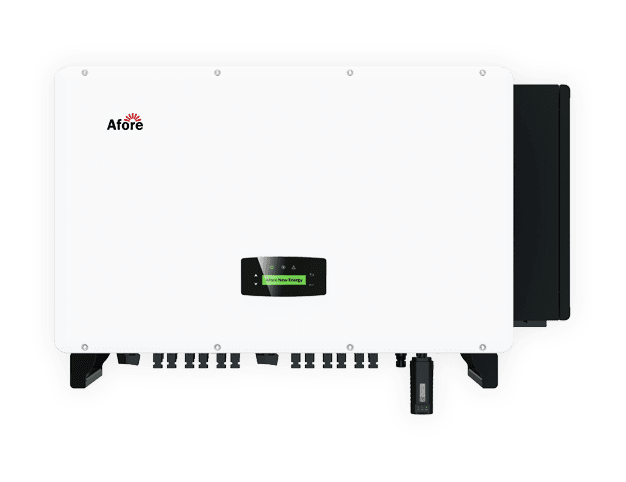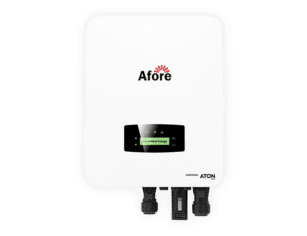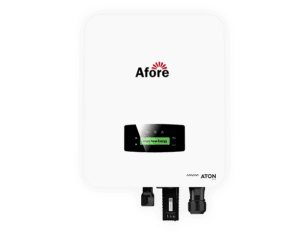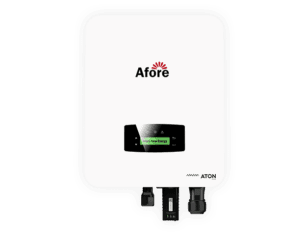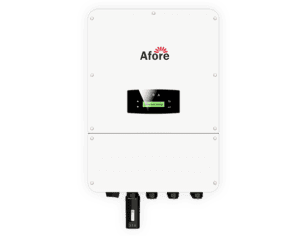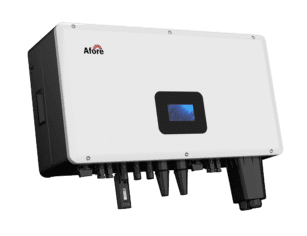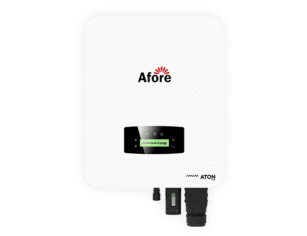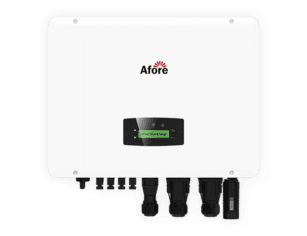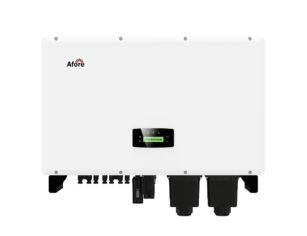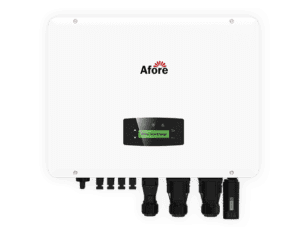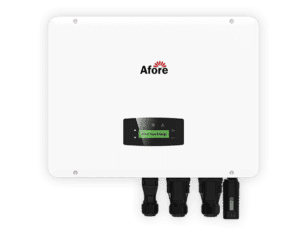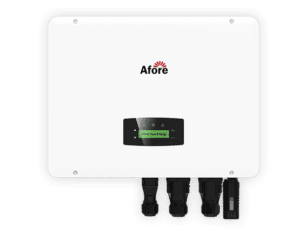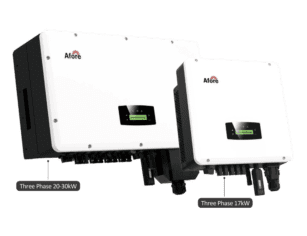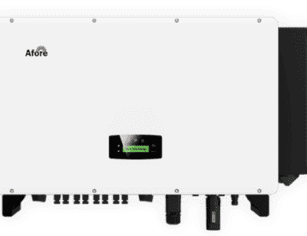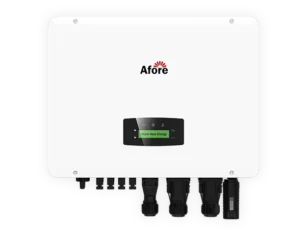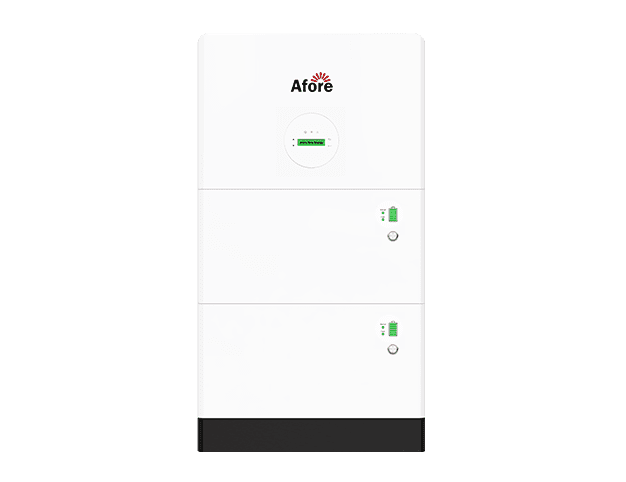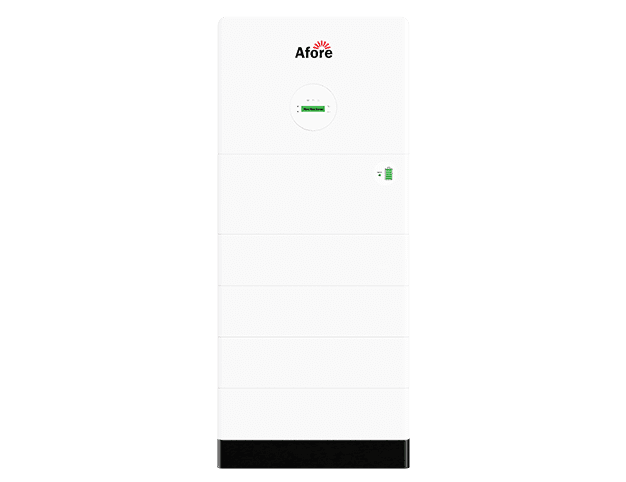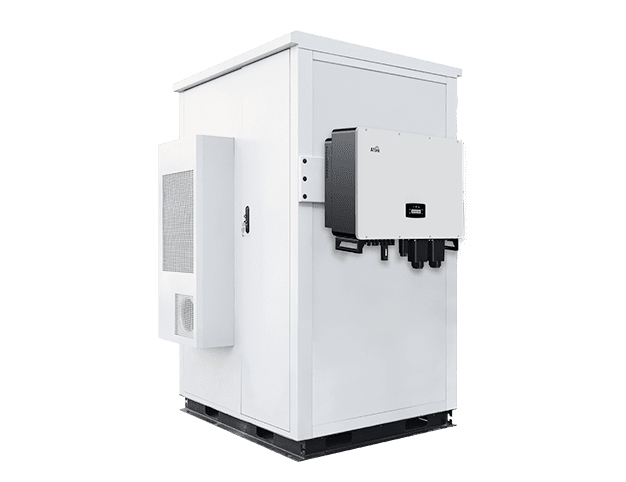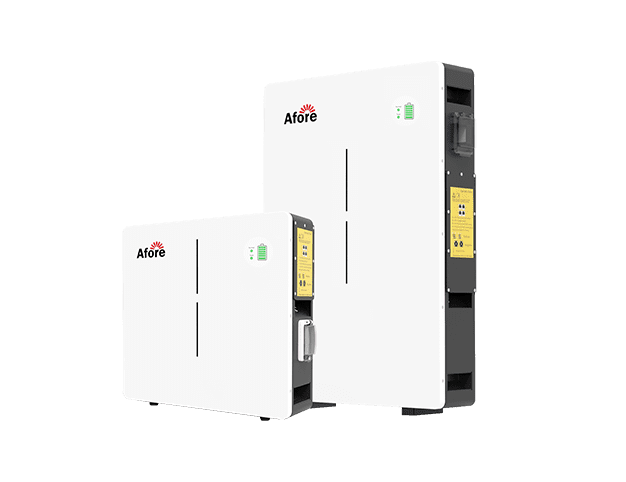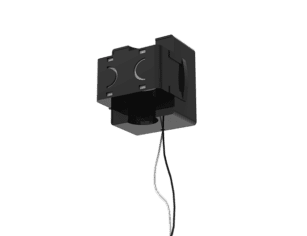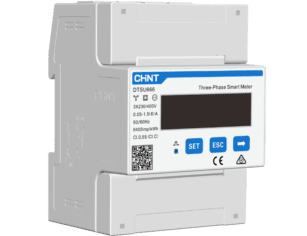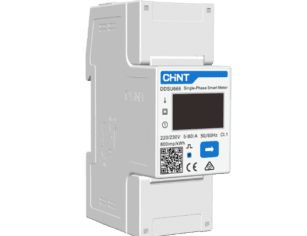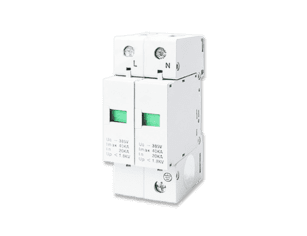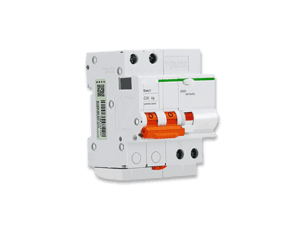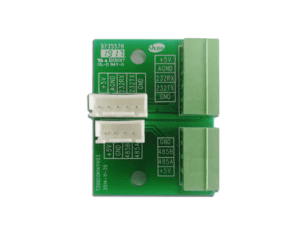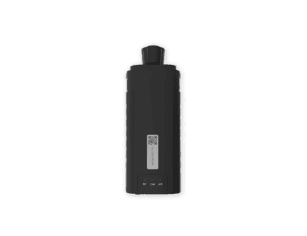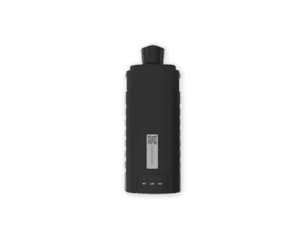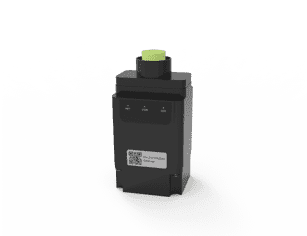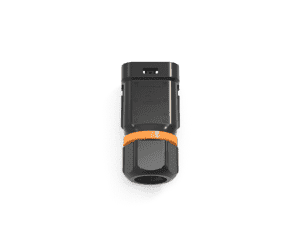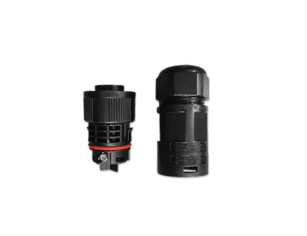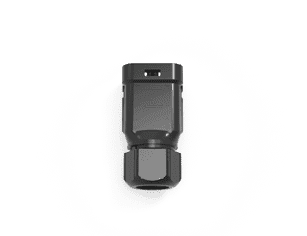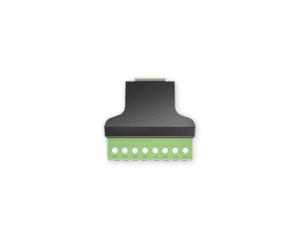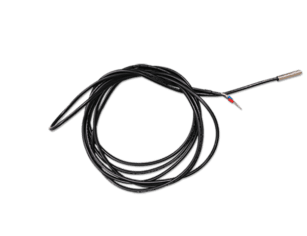Installazione di un inverter per camper: alimentate le vostre avventure fuori rete
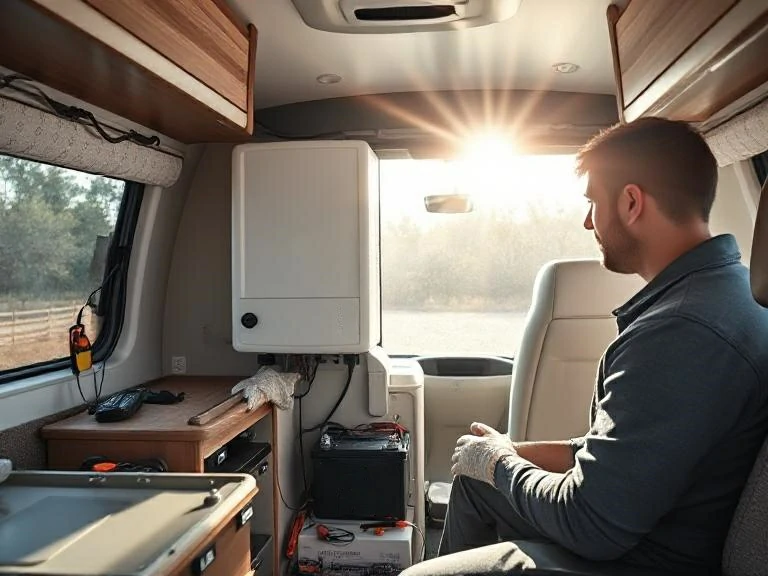
Indice dei contenuti
Sia che abbiate intenzione di uscire e rilassarvi per il fine settimana, sia che abbiate intenzione di vivere a lungo nel vostro camper, l’installazione di un inverter per camper è sicuramente un’opzione fantastica che può fare una grande differenza! Questo dispositivo miracoloso è in grado di trasformare la corrente continua della batteria nella corrente alternata che usiamo tutti i giorni, in modo da poter utilizzare i vostri elettrodomestici preferiti anche in luoghi dove non c’è una rete elettrica. Dalla preparazione di una buona tazza di caffè alla ricarica del computer portatile, la comodità non sarà compromessa se l’inverter è installato correttamente.
La nostra guida vi accompagnerà nella scelta dell’inverter, dalla scelta del modello giusto al montaggio passo dopo passo. Risponderemo anche a tutte le domande che potreste avere sull’installazione di un inverter per camper e vi aiuteremo a evitare i più comuni errori da principianti, in modo da far partire il vostro viaggio in camper con il piede giusto.
Cos’è un inverter per camper e perché ne avete bisogno?
Un inverter per camper converte l’alimentazione della batteria a 12 V (a volte 24 V) in corrente alternata a 120 V, proprio come un alimentatore domestico. Questo significa che potete alimentare apparecchi come microonde, TV e persino computer portatili mentre siete in campeggio o in viaggio. Senza un inverter, si rimane bloccati con l’alimentazione a corrente continua o con dispositivi che si affidano alla rete elettrica. L’installazione di un inverter per camper non è solo un aggiornamento, ma è praticamente un rito di passaggio per chiunque voglia vivere in camper.
Inverter e convertitore: qual è la differenza?
Prima di parlare di come installare un inverter in un camper, dobbiamo correggere un piccolo dettaglio su cui le persone tendono a confondersi. Il convertitore del camper è responsabile della trasformazione dell’alimentazione CA in corrente continua, in modo da poter caricare la batteria del camper. Un inverter, invece, fa esattamente il contrario: trasforma l’alimentazione in corrente continua in corrente alternata.
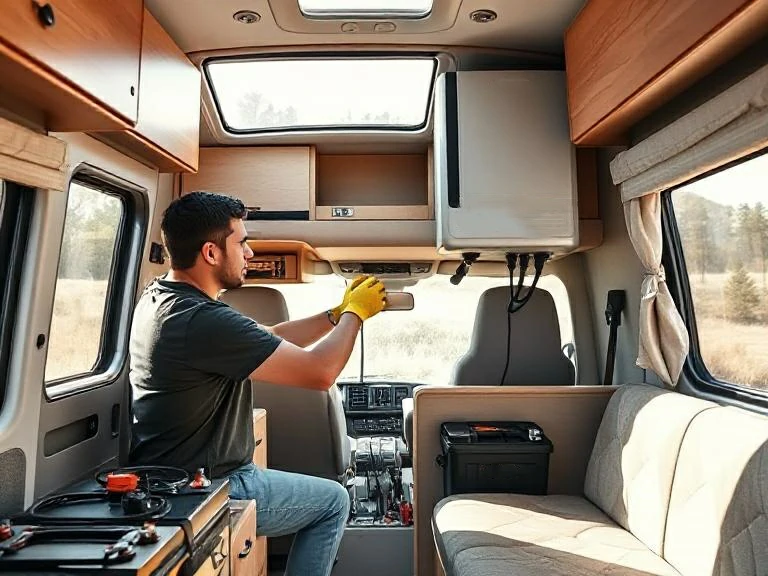
Tipi di inverter per camper
Esistono due tipi principali di inverter:
Inverter a onda sinusoidale modificata
Sono più convenienti, ma non sono ideali per i dispositivi elettronici sensibili. Sono più indicati per le esigenze di base, come l’alimentazione di luci e ventilatori.
Inverter a onda sinusoidale pura
Producono elettricità più pulita e sicura per computer portatili, TV e altri gadget moderni. Se volete installare un inverter in un camper che alimenti tutto senza problemi, questa è la strada da seguire.
Caricabatterie con inverter
Volete una soluzione due in uno? Un inverter-caricatore, come un inverter solare ibridoconsente di utilizzare l’alimentazione a corrente alternata e di ricaricare le batterie quando è collegato alla rete elettrica. È un po’ più costoso, ma può ottimizzare il sistema.
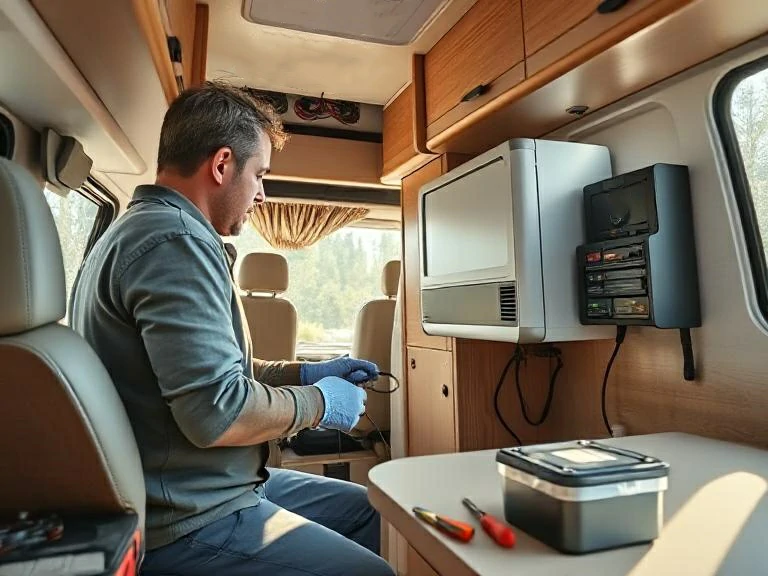
Scegliere la dimensione giusta dell’inverter
Se avete deciso di installare un inverter per camper, una delle prime (e più importanti) domande che dovrete porvi è: di quanto inverter ho bisogno per il mio camper? Non si tratta solo di scegliere il più grande che potete permettervi, ma di scegliere le dimensioni giuste per la vostra configurazione specifica, in modo da ottenere un’alimentazione affidabile senza pagare troppo o sovraccaricare il sistema. A titolo di riferimento, si consideri come produttori professionali di inverter solari La ricerca delle loro linee di prodotti può darvi una buona idea di ciò che è disponibile per i diversi livelli di potenza.
Capire le basi del dimensionamento degli inverter
Le dimensioni dell’inverter sono solitamente misurate in watt e il numero scelto deve riflettere la richiesta di potenza totale dei dispositivi che si intende far funzionare contemporaneamente. In parole povere, l’inverter deve gestire sia il wattaggio continuo che il wattaggio di picco (detto anche wattaggio di punta) degli apparecchi.
- Il wattaggio continuo è la quantità di potenza che l’inverter deve erogare costantemente nel tempo.
- Il wattaggio di sovratensione è il breve picco di potenza necessario quando gli apparecchi si accendono per la prima volta (soprattutto quelli come microonde, frigoriferi o utensili elettrici).
Ad esempio, se si desidera far funzionare un computer portatile (100 W), un televisore (150 W) e un piccolo forno a microonde (900 W), si arriva già a oltre 1.100 watt di assorbimento continuo, senza considerare la potenza di picco del forno a microonde. Ecco perché il calcolo del fabbisogno energetico reale è il primo passo per una scelta oculata.
Cosa funziona con un inverter in un camper?
In pratica, l’inverter può alimentare:
- Caricabatterie per telefoni e laptop
- Macchine da caffè e microonde
- TV, console di gioco e router Wi-Fi
- Macchine CPAP e piccoli dispositivi medici
- Strumenti o illuminazione a basso consumo
Tuttavia, non tutti gli inverter per camper sono creati allo stesso modo. Alcuni sono in grado di gestire condizionatori e riscaldatori elettrici, mentre altri fanno saltare un fusibile al solo pensiero. Se avete intenzione di far funzionare apparecchi ad alta potenza, come un condizionatore d’aria per camper, avrete bisogno di un inverter a onda sinusoidale pura più grande e di un banco di batterie molto robusto per supportarlo.
Abbinamento dell’inverter al banco batterie
Supponiamo che siate orientati verso un inverter da 2000 watt. È un’ottima opzione di fascia media per la maggior parte dei camperisti, ma dovete anche chiedervi: la vostra batteria ha la capacità di supportare tale assorbimento?
Ecco una rapida regola empirica: per ogni 1.000 watt di capacità dell’inverter, è necessaria almeno una batteria a ciclo profondo da 100 Ah. Più di una se si prevede di rimanere fuori dalla rete per lunghi periodi.
Considerate anche il voltaggio del vostro sistema di batterie: 12 V, 24 V o addirittura 48 V. Un sistema a 24 o 48 V consente di erogare energia in modo più efficiente su distanze maggiori e con uno spessore minore dei cavi, il che può essere ideale per gli inverter più grandi.
Onda sinusoidale modificata o pura: influisce sul dimensionamento?
Sì, è così. Gli inverter a onda sinusoidale modificata tendono a essere meno efficienti e potrebbero non essere adatti a dispositivi elettronici sensibili. Se vi state chiedendo come installare un inverter in un camper che gestisca in modo affidabile computer portatili, TV e apparecchiature mediche, scegliete sempre un inverter a onda sinusoidale pura, soprattutto se volete installare un inverter per camper che duri nel tempo. Sono un po’ più costosi, ma valgono la pena per la tranquillità.
Partite dalle vostre esigenze, non dai Watt
Invece di pensare: “Qual è l’inverter più grande che posso infilare nel mio camper?”, una domanda migliore è: “Che cosa mi aiuta davvero ad alimentare un inverter per camper?”. Se vi limitate a campeggiare per il fine settimana e a ricaricare i dispositivi, un inverter da 600-1000 W può essere sufficiente. Ma se state pianificando uno stile di vita a tempo pieno e avete bisogno di far funzionare più apparecchi contemporaneamente, gli inverter da 2000W-3000W sono più in linea con le vostre esigenze.
Ricordate che installare un inverter per camper non significa solo collegare un nuovo giocattolo. Si tratta di creare un sistema che supporti il vostro stile di vita in camper senza prosciugare le batterie o il portafoglio.
Una rapida scheda di dimensionamento
| Elettrodomestici | Potenza approssimativa |
| Computer portatile | 50-100W |
| TV | 100-150W |
| Caffettiera | 600-1000W |
| Microonde (piccolo) | 900-1200W |
| Condizionatore d’aria per camper | 1500-3000W+ |
| Asciugacapelli | 1000-1800W |
Se non si è sicuri, è sempre più sicuro dimensionare il sistema leggermente al di sopra dell’utilizzo previsto, soprattutto se si sta preparando il sistema a prova di futuro per altri gadget in futuro.
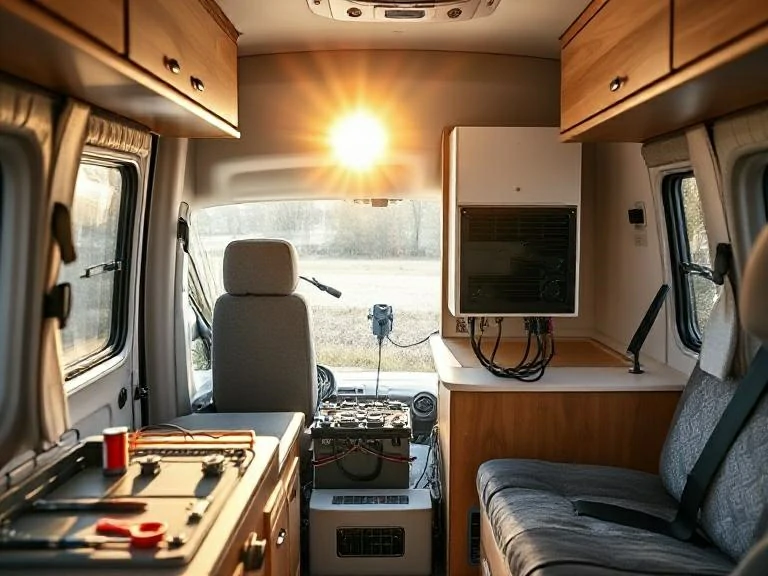
Si può aggiungere un inverter a un camper?
Sì! Sia che abbiate un camper d’epoca o un impianto nuovo di zecca, è possibile installare un inverter per camper. Assicuratevi però che la vostra batteria e il cablaggio siano in grado di gestire il carico, perché l’installazione di un inverter per camper è solo una parte dell’equazione. In molti casi, il potenziamento della capacità della batteria fa parte del processo.
Strumenti e materiali necessari
- Inverter di potenza (onda sinusoidale pura o modificata): un elemento essenziale se si installa un inverter per camper da zero.
- Cavi della batteria (di calibro adeguato)
- Fusibile o interruttore in linea
- Interruttore di trasferimento (opzionale)
- Cacciaviti, crimpatrici, tagliafili
- Tubo termorestringente o nastro isolante
Facoltativo ma utile:
- Monitoraggio della batteria
- Regolatore di carica solare (se si utilizzano pannelli solari)
Come installare un inverter di potenza in un camper
L’installazione di un inverter nel camper potrebbe sembrare un lavoro da elettricista professionista, ma con un po’ di pazienza e gli strumenti giusti è un’operazione che molti camperisti amanti del fai-da-te possono affrontare da soli. Sia che stiate aggiornando la vostra configurazione o che abbiate appena iniziato a fare boondocking, sapere come installare un inverter in un camper vi permette di avere un maggiore controllo sulle vostre esigenze di alimentazione mobile.
Esaminiamo il processo passo per passo, in modo che possiate affrontare l’installazione dell’inverter per camper in tutta tranquillità.
Fase 1: scegliere l’inverter giusto
Prima ancora di prendere in mano uno strumento, è necessario capire quale tipo di inverter si adatta al vostro stile di vita in camper. Questa è la chiave di volta per installare un inverter per camper nel modo giusto. State alimentando dispositivi elettronici sensibili come computer portatili e macchine CPAP? È preferibile un inverter a onda sinusoidale pura. Lo utilizzate solo per far funzionare gli elettrodomestici di base? Un inverter a onda sinusoidale modificata potrebbe fare al caso vostro. Pensate al vostro fabbisogno energetico giornaliero e dimensionate l’inverter di conseguenza. Una buona regola è quella di scegliere un inverter un po’ più grande di quello che si pensa di avere bisogno, perché gli aggiornamenti futuri e i dispositivi aggiuntivi tendono a intrufolarsi.
Fase 2: scegliere la posizione giusta
La posizione è molto importante. L’inverter dovrebbe essere vicino al banco di batterie per ridurre le perdite di potenza, ma ha anche bisogno di una ventilazione adeguata. Questi dispositivi possono generare calore, soprattutto quando si utilizzano carichi pesanti. Montate l’inverter in un’area asciutta e ben ventilata, lontano da materiali infiammabili. Sotto il letto, all’interno di un vano tecnico o vicino all’alloggiamento della batteria sono scelte comuni, a seconda della disposizione del camper.
Fase 3: raccogliere gli strumenti e i materiali giusti
Avrete bisogno di:
- L’inverter (naturalmente!)
- Cavi CC di grosso calibro
- Fusibile e portafusibile ANL
- Interruttore automatico in linea (opzionale ma utile)
- Capicorda del terminale della batteria
- Cacciaviti e chiavi inglesi
- Tagliafili e crimpatrici
- Hardware di montaggio
- Guanti e occhiali di sicurezza
Avere tutto a portata di mano prima di iniziare evita il frustrante viaggio di andata e ritorno dal ferramenta a metà dell’installazione dell’inverter per camper.
Fase 4: scollegare le batterie
Prima di eseguire qualsiasi lavoro elettrico, scollegare sempre il banco batterie del camper. È uno degli elementi irrinunciabili per l’installazione sicura di un inverter per camper. La sicurezza prima di tutto. In questo modo si evitano cortocircuiti o scosse accidentali mentre si maneggiano i cavi.
Fase 5: montaggio dell’inverter
Fissare l’inverter a una superficie piana utilizzando la ferramenta appropriata. Un montaggio solido è una parte fondamentale dell’installazione di un inverter per camper costruito per durare nel tempo. Assicuratevi che sia stabile e che abbia spazio per il flusso d’aria. Evitate di montarlo a testa in giù o di lato, a meno che il manuale non lo preveda esplicitamente.
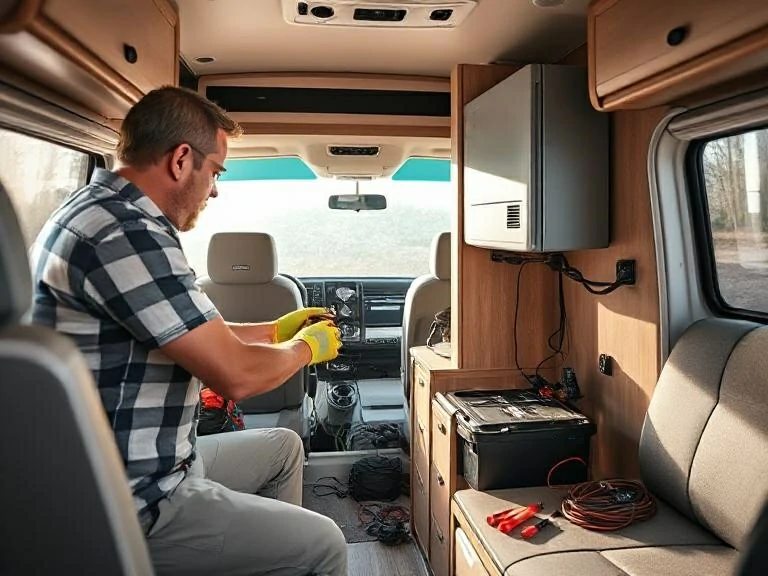
Fase 6: Cablaggio dell’inverter alla batteria
Per collegare l’inverter al banco batterie, utilizzare i cavi CC per impieghi gravosi: qui l’installazione di un inverter per camper diventa un po’ più tecnica. Mantenere i cavi il più corti possibile per ridurre la caduta di tensione. Per sicurezza, installare il fusibile ANL sul cavo positivo, vicino alla batteria. Ricontrollate tutti i collegamenti: qui è fondamentale che siano stretti e puliti.
Se il camper utilizza uno staccabatteria, si consiglia di collegare l’inverter al lato sempre acceso, in modo che funzioni anche quando gli altri circuiti sono spenti.
Fase 7: Messa a terra dell’inverter
La maggior parte degli inverter deve essere collegata a terra al telaio del camper per poter funzionare in modo sicuro. Seguite le istruzioni del produttore e assicuratevi che il punto di messa a terra sia pulito e sicuro.
Passo 8: collegare l’uscita CA
A seconda del modello di inverter, è possibile disporre di terminali a filo o di semplici prese CA. È possibile collegare gli elettrodomestici direttamente all’inverter, oppure collegarlo all’impianto elettrico esistente del camper utilizzando un interruttore di trasferimento. Se non si è sicuri di questa fase, è bene consultare un elettricista autorizzato per camper. Sbagliare questa parte potrebbe essere pericoloso.
Fase 9: collaudo del sistema
Ricollegare la batteria, accendere l’inverter e verificarne il corretto funzionamento. La verifica è fondamentale quando si installa un inverter per camper, soprattutto prima di qualsiasi viaggio serio. Provate a collegare un piccolo dispositivo, come il caricabatterie del telefono, per verificare che tutto funzioni correttamente. Tenete d’occhio eventuali codici di errore o comportamenti insoliti.
Fase 10: Fissare e pulire
Riordinate il cablaggio, assicuratevi che tutti i collegamenti siano ben saldi e fissate i cavi allentati. Un’installazione ordinata non è solo estetica: riduce l’usura e il rischio di problemi elettrici nel tempo.
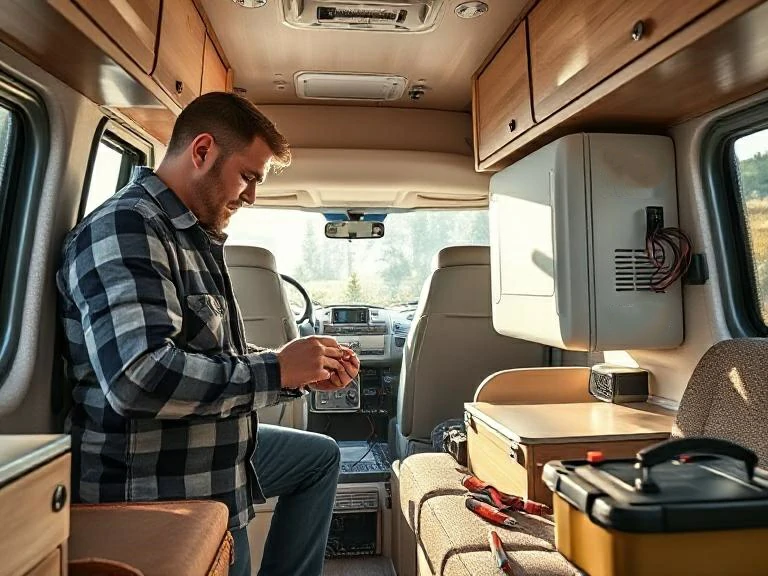
Suggerimenti operativi e sicurezza
È giusto lasciare un inverter per camper sempre acceso?
Tecnicamente sì, ma tenete d’occhio i livelli delle batterie. Se la lasciate accesa senza un ingresso di ricarica (solare o da terra), le batterie potrebbero scaricarsi rapidamente.
Posso guidare il mio camper con l’inverter acceso?
Sì, è possibile. Infatti, molti camperisti lo fanno per alimentare frigoriferi o caricare computer portatili mentre sono in viaggio. Basta assicurarsi che il sistema sia fissato in modo sicuro e che le batterie siano all’altezza del compito, considerazioni importanti se si installa un inverter per camper per viaggiare a tempo pieno.
Cosa funziona con l’inverter in camper? Posso far funzionare l’aria condizionata del mio camper con un inverter?
È possibile far funzionare luci, computer portatili, piccoli elettrodomestici da cucina e talvolta anche microonde. Per far funzionare un’unità di aria condizionata, invece, è necessario un inverter pesante e una notevole capacità della batteria. È fattibile, ma non sempre efficiente.
Errori comuni da evitare
- Cavi sottodimensionati (ciao, calore e inefficienza!)
- Nessun fusibile o interruttore in linea
- L’inverter è troppo lontano dal banco batterie
- Mancata messa a terra del sistema
Evitate questi inconvenienti e il vostro viaggio nell’installazione di un inverter per camper filerà liscio come l’olio.
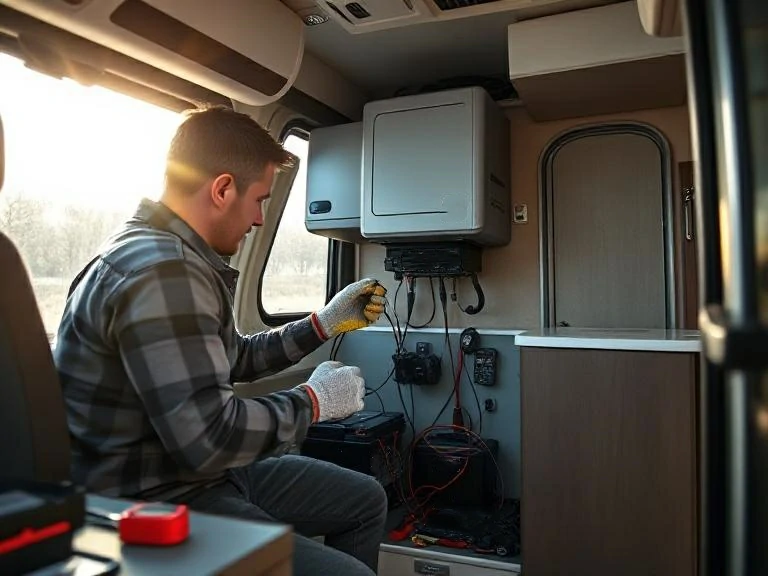
Conclusione
Assolutamente. Sia che si monti una tenda e ci si accampi in montagna e nei campi, sia che si parcheggi l’auto sulla spiaggia per godersi la brezza marina, non si deve lottare per trovare l’interfaccia di alimentazione da terra, e si può utilizzare direttamente l’alimentazione CA, che è una sensazione gratuita e facile è semplicemente fantastica!
In tutta onestà, sia che abbiate intenzione di farlo da soli e di installare un inverter nel vostro camper, sia che abbiate intenzione di rivolgervi a un professionista che vi aiuti a farlo, il solo pensiero di poter utilizzare l’elettricità in qualsiasi momento e in qualsiasi luogo sulla strada e la soddisfazione che deriva da questa comodità vi farà davvero valere la pena di passare attraverso il problema di ottenerlo!
Domande frequenti
Quanto costa installare un inverter in un camper?
Il costo totale dell’installazione di un inverter per camper dipende da alcuni fattori. In primo luogo, il tipo e le dimensioni dell’inverter sono fondamentali e influiscono direttamente sul prezzo. In secondo luogo, intendete eseguire l’installazione da soli o affidarvi a un professionista? Anche questa scelta farà la differenza sul costo. Inoltre, se avete bisogno di altri piccoli accessori come kit di cablaggio, interruttori o aggiornamenti delle batterie, anche questi dovranno essere presi in considerazione. Nel complesso, il costo dell’intero processo di installazione è determinato da tutti questi fattori.
- Installazione fai da te: Se si dispone già degli strumenti e di alcune conoscenze elettriche, il costo dell’installazione di un inverter per camper può variare da $200 a $600 circa, soprattutto per il prezzo dell’inverter e del cavo.
- Installazione professionale: Se si preferisce lasciar fare ai professionisti, la manodopera può aggiungere da $300 a $700 a seconda della complessità. I sistemi di fascia alta con caricabatterie o interruttori di trasferimento integrati possono far lievitare i costi totali a $1.500+.
Per i camperisti attenti al budget, l’installazione di un inverter per camper è fattibile con le giuste guide e precauzioni di sicurezza.
È possibile aggiungere un inverter a un camper che ne è sprovvisto?
Assolutamente sì. Molti camper vecchi o entry-level sono dotati di un convertitore (che carica solo le batterie dalla rete elettrica) ma non di un inverter. L’installazione di un inverter per camper è un aggiornamento intelligente se si desidera utilizzare la corrente domestica a 120 V quando si è fuori rete.
Assicuratevi solo che il vostro sistema di batterie sia all’altezza del compito e seguite le procedure di cablaggio corrette. Dovrete anche decidere se volete un semplice inverter o una combinazione ibrida inverter/caricabatterie.
È possibile lasciare un inverter per camper sempre acceso?
Tecnicamente sì, è possibile lasciare l’inverter acceso 24 ore su 24, 7 giorni su 7. Ma l’opportunità di lasciarlo dipende dalla vostra configurazione energetica e dall’uso che fate del camper.
Quando l’inverter è acceso, continua ad assorbire una piccola quantità di energia anche quando non è collegato ad alcuna fonte di alimentazione. È sempre meglio spegnerlo quando non è in uso se siete in campeggio e volete preservare la durata delle batterie. Se siete collegati alla rete elettrica o avete l’energia solare che alimenta le vostre batterie, lasciarlo acceso può andare bene.
Tuttavia, molti camperisti esperti consigliano di spegnere l’inverter durante la notte o quando si è lontani dal camper per evitare di scaricare inutilmente la batteria o di surriscaldarla.
Quanto è grande l’inverter necessario per un camper?
Tutto dipende da cosa si vuole far funzionare. Un camperista minimalista che utilizza luci a LED e un caricabatterie per il telefono potrebbe aver bisogno solo di un inverter da 300-600W. D’altra parte, se si desidera alimentare un forno a microonde, una TV, un computer portatile e magari una macchina per il caffè, tutto in una volta, un inverter a onda sinusoidale pura da 2000W o addirittura 3000W è la scelta migliore.
Prima di iniziare l’installazione dell’inverter nel camper, elencate tutti gli elettrodomestici che userete e il loro wattaggio. Sommandoli e tenendo conto delle sovratensioni di avvio, si avrà un’idea precisa delle dimensioni dell’inverter.
Posso guidare il mio camper con l’inverter acceso?
Sì, è possibile, anche se con alcune avvertenze. Molti camperisti tengono acceso l’inverter durante la marcia per alimentare il frigorifero, caricare i dispositivi o far funzionare altri apparecchi. Con le impostazioni corrette del sistema di batterie e dell’alternatore, siete al sicuro.
Tuttavia, durante la guida è bene prestare attenzione ai carichi ad alta potenza, come forni a microonde o macchine per il caffè. Controllare sempre due volte l’installazione dell’inverter e fissare i collegamenti per evitare cortocircuiti o surriscaldamenti.
Ho davvero bisogno di un inverter per il mio camper?
Se avete intenzione di campeggiare senza rete elettrica, ma volete comunque utilizzare apparecchi alimentati a corrente alternata, la risposta è sì.
L’installazione di un inverter nel vostro camper vi dà libertà di movimento: potete preparare il caffè nei boschi, guardare un film nel deserto o far funzionare un ventilatore lontano dalla rete in una giornata calda. Senza di esso, sarete bloccati con l’alimentazione a 12 V CC o dovrete affidarvi a un generatore.
Anche se vi accampate nella natura solo occasionalmente, l’installazione di un inverter per camper può migliorare notevolmente la vostra esperienza in camper.
Cosa funziona con l’inverter in camper? Posso far funzionare l’aria condizionata del mio camper con un inverter?
L’inverter alimenta tutto ciò che normalmente è collegato alle prese domestiche: TV, laptop, caricatori di telefoni, piccoli elettrodomestici da cucina e altro ancora. Ma far funzionare un condizionatore d’aria? È più difficile.
La maggior parte dei condizionatori d’aria per camper richiede 1500-3000 watt o più, soprattutto durante l’avvio. Per far funzionare un condizionatore con l’inverter, è necessario un inverter a onda sinusoidale pura di grandi dimensioni e un enorme banco di batterie, di solito al litio. Non è impossibile, ma sicuramente non è adatto a un camperista occasionale.
Quindi, tecnicamente, è possibile far funzionare l’aria condizionata da un inverter, ma ciò richiede una certa attrezzatura che non tutti i camper hanno.
Un convertitore per camper è la stessa cosa di un inverter?
No, sono due cose molto diverse, anche se i nomi sono simili.
- Un convertitore preleva la corrente alternata a 120 V (ad esempio dalla rete elettrica o da un generatore) e la converte in corrente continua a 12 V per caricare le batterie e far funzionare gli apparecchi a corrente continua.
- Un inverter, invece, preleva i 12 V CC dalle batterie e li inverte in 120 V CA in modo da poter utilizzare i normali dispositivi domestici quando non si è collegati alla rete elettrica.
Alcuni camper moderni hanno una combinazione di inverter e caricabatterie che fa entrambe le cose. Ma in generale, se si vuole far funzionare una macchina per il caffè o un computer portatile, è necessario installare un inverter per camper e non affidarsi semplicemente a un convertitore.
Per quanto tempo un inverter funziona con le batterie del camper?
Dipende dalla capacità della batteria e dalla quantità di elettricità utilizzata. Immaginate di avere una batteria da 100Ah, che in teoria dovrebbe essere in grado di alimentare un apparecchio da 1000 watt per un’ora. Tuttavia, la realtà spesso non è così ideale, perché ci sono delle perdite, inoltre non si può scaricare troppo la batteria, quindi in realtà fornirà meno energia.
Ad esempio, il funzionamento di un microonde da 1000W per 10 minuti potrebbe utilizzare 15-20% di una batteria standard da 100Ah. Se si aggiungono luci, ventilatori e altri dispositivi elettronici, l’autonomia può ridursi rapidamente.
Considerate la possibilità di passare a una batteria al litio e di caricarla durante il giorno aggiungendo l’energia solare per un uso prolungato.
Posso installare un inverter nel mio camper da solo?
Se siete in grado di maneggiare gli attrezzi di base e di capire come funzionano le connessioni elettriche, potete assolutamente montare un inverter sul vostro camper da soli, è assolutamente fattibile. Ci sono tonnellate di ottime guide e schemi online per aiutarvi.
Tuttavia, se dovete installare un inverter di grandi dimensioni, collegarlo al pannello principale del camper o non siete sicuri delle precauzioni di sicurezza, è sempre meglio consultare un professionista.




